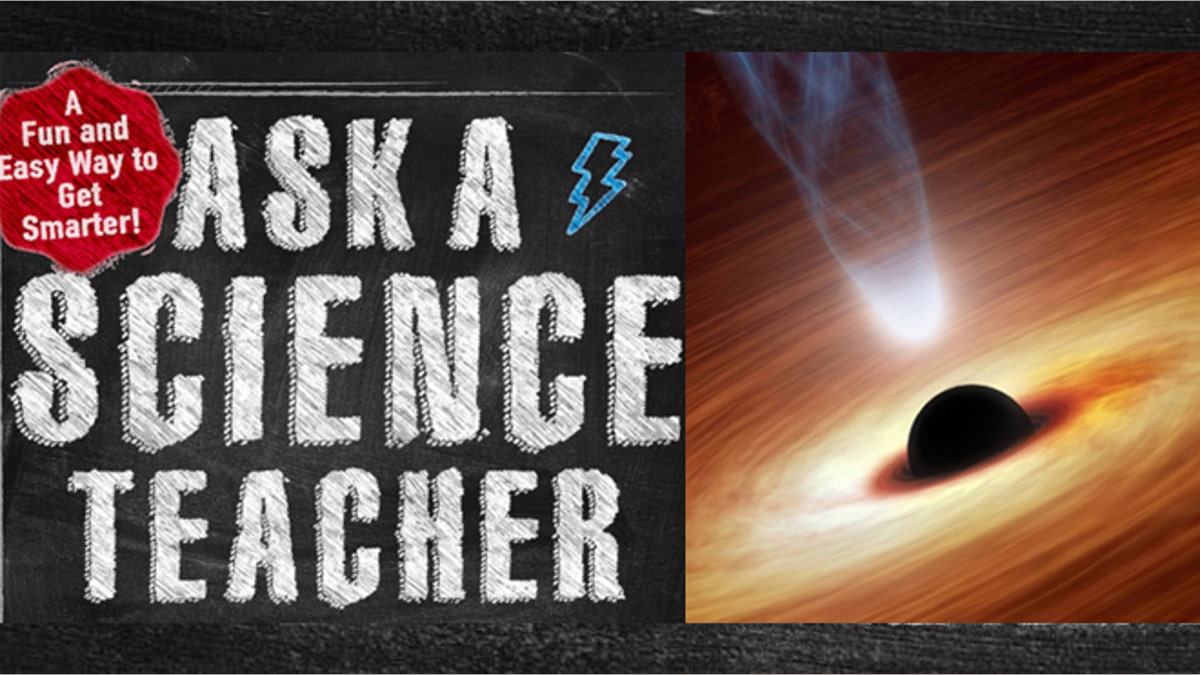
(Larry Scheckel/NASA)
A black hole is a place in Washington, DC, where all our tax dollars go. Just kidding! A black hole is perhaps the strangest object in the universe. It is the remains of a massive dead star that has run out of fuel and collapsed.
There are two main, competing processes that shape stars. Fusion reactions are similar to tiny hydrogen bombs going off and tend to make the star bigger. At the same time, gravity tends to crunch all the solar material to the center. These two forces are balanced throughout a star’s life, which typically lasts for billions of years.
The size of a star is determined by this balance between gravity, making it smaller, and explosive forces, making it bigger, which shifts only at the end of a star’s life, when the ultimate fate of any star is determined by its mass.
Here’s what happens to a star the size of our Sun. When nearly all the hydrogen is converted to helium, gravity will dominate and the Sun will collapse, ignite the nuclear ashes of helium, and fuse them into carbon. The Sun will then expand to the size of the orbit of Mars, at which point it will be a red giant.
After a few million years, the helium will be all burned out, the red giant will collapse, and the Sun will become a cool cinder, called a black dwarf. Our Sun will never be a supernova. It is just too small.
- Ancient Mars was once covered in water — and MAVEN will find out where it went
- Amazing new picture of Saturn
- NASA’s newest Mars flyer will explore atmosphere
- In pictures: ISON, ‘comet of the century’ no more?
- ISON’s ghost: ‘Comet of the century’ likely no longer exists
- Ask a science teacher: Which came first, the chicken or the egg?
- Best astronomy photos of the year named
When all the star’s hydrogen is used up, the fusion reactions stop, and the star’s gravity takes over, pulling material inward and compressing the core. This compression generates heat, eventually leading to a supernova explosion, which blasts material and radiation out into space.
The story is quite different for a star more than ten times the mass of the Sun. A massive star can become a supernova. Once nuclear fusion is done, the collapse doesn’t stop. The star not only caves in on itself, but the atoms that make up the star collapse so there are no empty spaces. What is left is a core that is highly compressed, very massive, and very dense. Gravitation is so strong near this core that light can’t even escape. The particles within the core have collapsed and crushed themselves out of visible existence. The star disappears from view and is now a black hole.
So if we can’t see a black hole, how do we know they exist? By their gravitational effects. Though they’re not visible, we can detect or hypothesize about their presence by studying surrounding objects. Astronomers can see material swirling around one or being pulled off a nearby visible star. The mass of a black hole can be estimated by observing the motion of nearby visible stars.
The core, or nucleus, of Galaxy NGC 4261, for example, is about the same size as our solar system, but it has a mass 1.2 billion times as much as our Sun’s. Such a huge mass for such a small disk indicates the presence of a black hole. The core of this galaxy contains a black hole with huge spiral disks feeding dust and other material into it.
What happens inside a black hole? Much is unknown. When astrophysicists talk about the workings of black holes, they speak a different language: event horizons, singularities, gravity lenses, and ergospheres— strange stuff! And yet, incredibly, Albert Einstein predicted the existence of black holes way back in 1915 in his General Theory of Relativity.
From the book, "Ask a Science Teacher: 250 Answers to Questions You’ve Always Had About How Everyday Stuff Really Works"; Copyright © Larry Scheckel, 2013. Available December 17 wherever books are sold.
